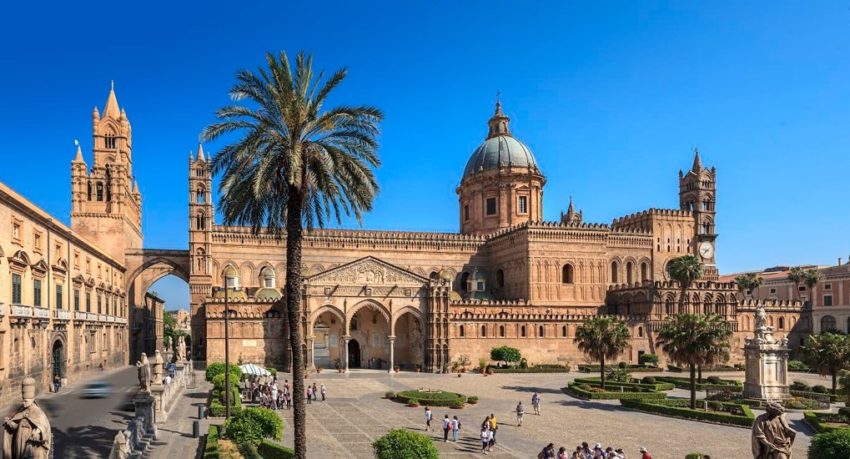Palermo is the capital of the island region of Sicily. It lies on Sicily’s northwestern coast at the head of the Bay of Palermo, facing east. Inland the city is enclosed by a fertile plain known as the Conca d’Oro (Golden Shell), which is planted with citrus groves and backed by mountains. Palermo was founded by Phoenician traders in the 8th century BC. It later became a Carthaginian settlement until its capture by the Romans in 254 BC. The city decayed under Roman rule but prospered after AD 535, when the Byzantines recovered it from the Ostrogoths. The Arabs conquered Palermo in 831, and it flourished as a centre of rich trade with North Africa. The ensuing era of Norman rule (1072–1194) was Palermo’s golden age: a reign in which Greeks, Arabs, Jews, and Normans worked together with singular harmony to create a cosmopolitan culture of remarkable vitality. Palermo is a busy port city, still trying to recover from twentieth-century years of blight. With some glorious historic buildings, vibrant, scruffy markets and a sunny climate, Palermo is doing a fairly good job of shaking off its reputation within Italy as a hotbed for both petty and organised crime. While areas of the centre are still run-down, and occasionally – along with the traffic – somewhat alarming, Palermo also has bohemian boutiques, famously-excellent street food, fine architecture (frequently crumbling) and a lively atmosphere. Palermo is also known for the chaotic and bustling markets and the range of products they offer: seafood, colourful fruit and vegetables, random local treasures – makes for a fascinating wander. Early morning is the best time to visit. The biggest markets are Ballarò, Capo and Vucciria.

